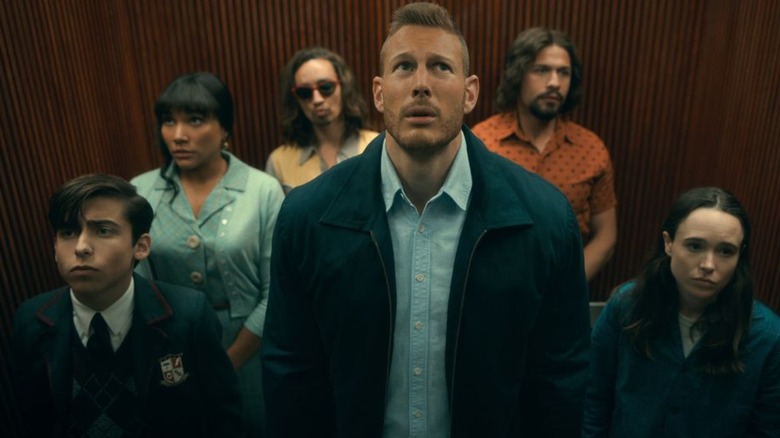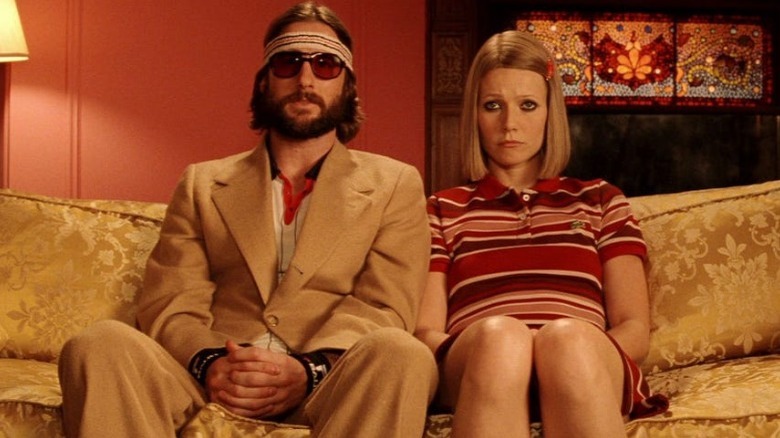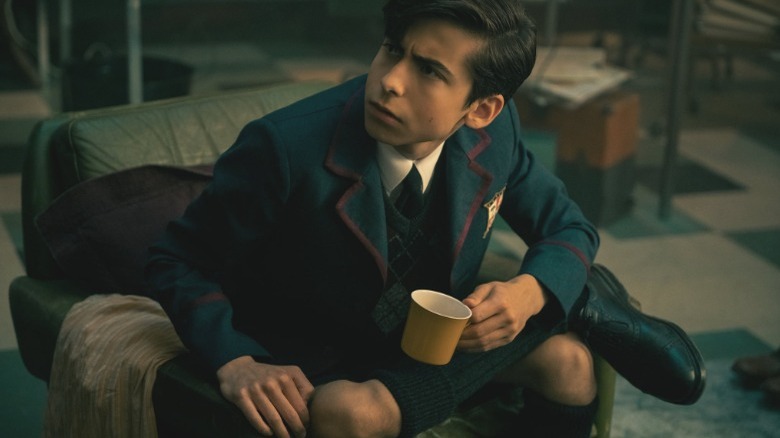How Wes Anderson Influenced The Umbrella Academy Aesthetic
Any emo kid of a certain age will tell you that Gerard Way was the blueprint for our adolescent aesthetic. So it's keenly interesting to hear about the aesthetic blueprint the My Chemical Romance frontman himself follows. No, it isn't The Cure or The Misfits — we're talking comic books today, not music. When it comes to bringing his graphic novel series "The Umbrella Academy" to life on Netflix, the author cites one influence more than any other, and it's a surprising one. Gerard Way has often said the works of Wes Anderson influenced early issues of "The Umbrella Academy."
How does the color and pattern-loving director's aesthetic show up in a dark show like "The Umbrella Academy?" Well, it turns out, in a lot of ways. Way has mentioned Anderson as an inspiration for the series several times in interviews and online, citing everything from the graphic novels' signature font to the central family's dysfunction. At first, this might be hard to imagine. The first season of "The Umbrella Academy" doesn't necessarily look like an Anderson movie. It's dark and dreary to the point that its main characters often have to take the umbrella-toting part of their title literally. But the show's first season does include a bleak and darkly funny reunion of adult children that calls to mind "The Royal Tenenbaums."
The Story Starts Off Tenenbaum-esque
Apparently, this was by design. Showrunner Steve Blackman says he didn't initially read "The Umbrella Academy" as a superhero saga, but as a "Tenenbaums"-esque family drama. "I liked it, but I saw this is a dysfunctional family show — with a body count," Blackman told NME. "I loved the Wes Anderson quality of dysfunctionality."
In an interview with Vulture, Gerard Way was asked about the Anderson connection. "It was a definite inspiration of the comic when I started it, especially the opening sequence," Way said. As a refresher, the series' opening scene explains that in 1989, 43 women simultaneously gave birth, resulting in seven superpowered children who were adopted by a wealthy man. Once Way points out the connection, it's easy to see in the specific, neat details within the show's opening sequence that scream "Wes Anderson" — like the row of seven identical bassinets being trotted to the house by seven near-identical nannies. The kids, too, are precocious and prone to errant interests, much like the Tenenbaums and other children in Anderson's character oeuvre.
The Homages Are Everywhere
Though Gerard Way pointed out to Vulture that there were no comics with a Wes Anderson flavor to them at the time ("The Umbrella Academy" was first published in 2007), the team behind the series seems to have consciously chosen to keep the parallels in the Netflix adaptation minimal. "I think they've pulled far enough away from the Wes Anderson look," Way told NME when describing the first-season set, saying that the show needed to be "a bit darker than his stuff."
Once you put on your "'The-Umbrella-Academy'-Has-Wes-Anderson-In-Its-DNA goggles," it's hard to take them off. The somewhat awkward relationship between Number One (Tom Hopper) and his adoptive sister Number Three (Emmy Raver-Lampman) is a little bit like Richie Tenenbaum's (Luke Wilson) inappropriate fixation on his adopted sister Margot (Gwyneth Paltrow). Meanwhile, sardonic, child-sized time traveler Number Five (Aidan Gallagher), who always appears in his school uniform, bears more than a passing resemblance to "Rushmore" protagonist Max (Jason Schwartzman). And while the show's second season splits up the family, it also sends them back in time to a world that is practically painted in Wes Anderson's color palette. With a third season on the way, we're eager to see if we'll spot any more discreet homages to the director when the Hargreeves family returns.


